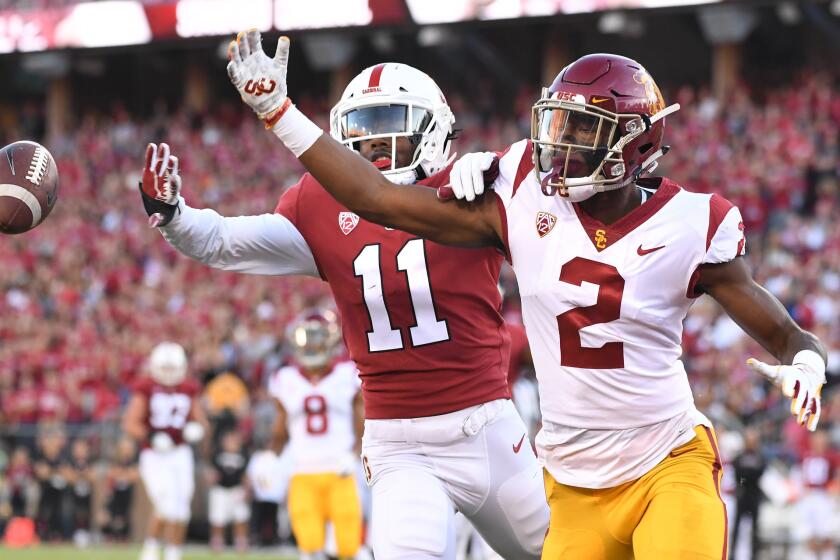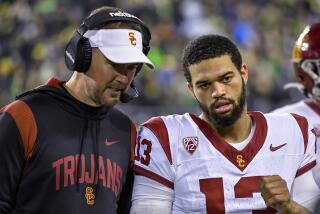Oklahomaâs Lincoln Riley is the nationâs preeminent quarterback guru
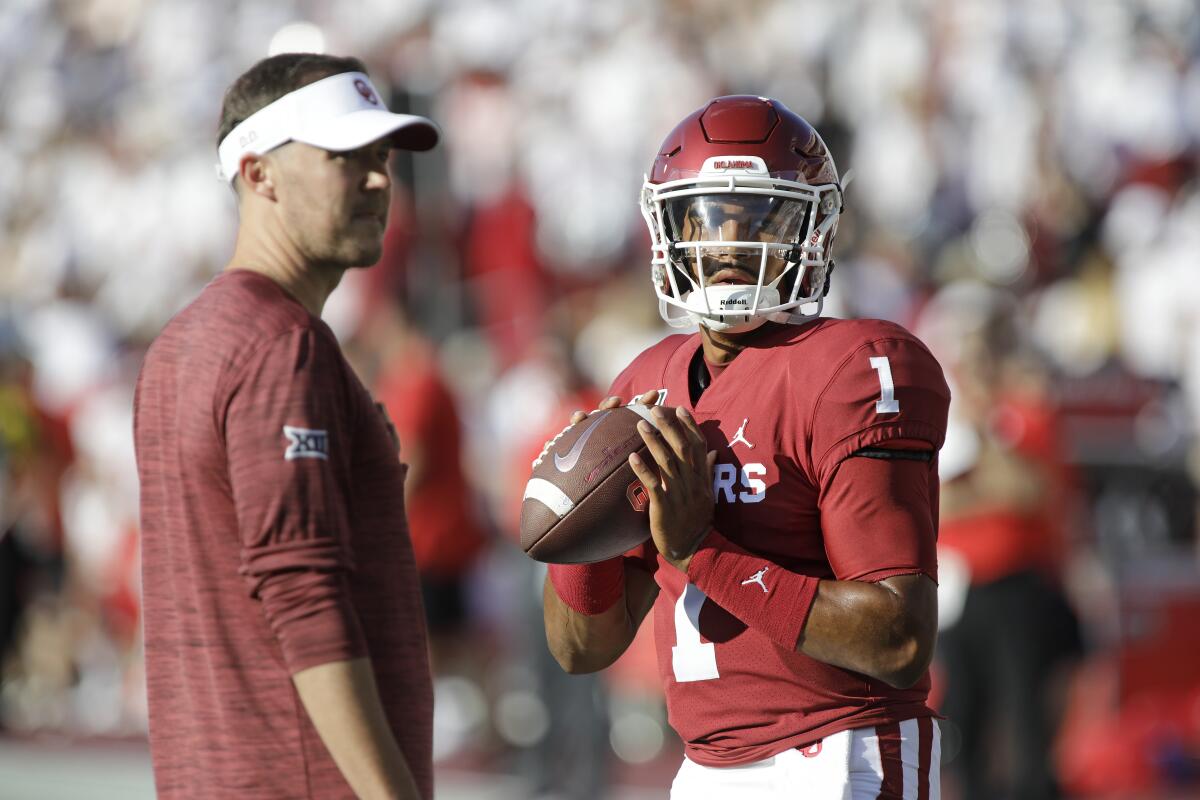
The kid from the small West Texas town with the funny name â Muleshoe, really? â is not in the mood for deep reflection on his rise to the top of his sport.
It is a game-week Tuesday night, about 8 p.m. Norman, Okla., time, and Lincoln Riley only has so much time to think about Baker Mayfield and Kyler Murray, the back-to-back Heisman Trophy winners and No. 1 overall NFL draft picks he mentored, and the back-to-back College Football Playoff appearances in his two years as the Soonersâ head coach.
âIâve tried to make myself enjoy these things, certainly in the moment,â Riley says. âBecause these are moments you donât get back. And thereâs no doubt theyâre special. But Iâve got an obligation. We always have a current team, and my obligation is to them, and this is a big job, and it entails a lot.â
He just turned 36 years old last week, and itâs clear the job he was given two years ago to replace Bob Stoops at Oklahoma is not too big. There were doubts then about Stoopsâ youthful successor, and there still exists a temptation to wonder if the life of Riley is simply lined with good fortune at every turn.
Just look at this offseason. When the Sooners lost Murray to the NFL, who was waiting for their call other than graduate transfer Jalen Hurts, the former Alabama star quarterback who went 26-2 as the starter before losing his job to Tua Tagovailoa?
With No. 5 Oklahoma coming to the Rose Bowl this weekend a 23 1/2-point favorite over UCLA and Hurts a legitimate threat to become a historic third straight Sooner Heisman winner, Rileyâs star seems to only shine brighter at each turn of the calendar.
But if youâre looking for answers about how he became college footballâs top quarterback whisperer, itâs better not to start at the top. Heâs more comfortable going back to the bottom.
So who was the first quarterback he ever worked with?
USC receiver Devon Williams entered the NCAAâs transfer portal this week, after playing sparingly through the Trojansâ first two games of the season.
He pauses for a second.
âProbably Graham Harrell,â Riley says.
He was not Harrellâs position coach at Texas Tech. That was head coach Mike Leach. Riley was only 20 years old when a 19-year-old Harrell walked through the door as a freshman in the summer of 2004, looking for someone who could teach him the Red Raidersâ âAir Raidâ offense.
How Riley became that guy is its own story, one that set this whole thing in motion.
Like most boys in West Texas, Riley grew up wanting to be the QB1, not coach him. As a senior, he led the Mules of Muleshoe, a town of about 5,000 people, to the state semifinals. Leach saw enough in him to accept him as a walk-on in the fall of 2002.
But it became obvious during that first year that Riley was not going to be a major college quarterback. He remained limited by a shoulder dislocation that he suffered early in high school. He recovered well enough to lead the Mules, but he was not even a fourth-stringer at Texas Tech.
After one year, Leach asked Riley to hang up his pads and join the staff as a student assistant.
âIt was tough, really tough,â Riley says. âIt was one of those moments you look back in in life and say I kind of had to make a decision to grow up and leave that part of my life behind, and I had to do it a little bit earlier than a lot of guys do.â
Riley could have transferred to a smaller school to keep the dream alive, but he was able to see the opportunity in front of him to work under one of the most progressive offensive minds in the game.
A year into that experiment, Riley met Harrell, a touted four-star recruit with all the promise in his right arm that Riley wished he had.
âReally Lincoln was the first person that taught me Mike Leachâs offense,â says Harrell, now in his first year as USCâs offensive coordinator. âHe was only a year or two older than me, but he knew the offense. We were so close in age, it became a friendship, but he was a friend I respected. In the beginning, it was because he was the only guy that was around to watch film with me.â
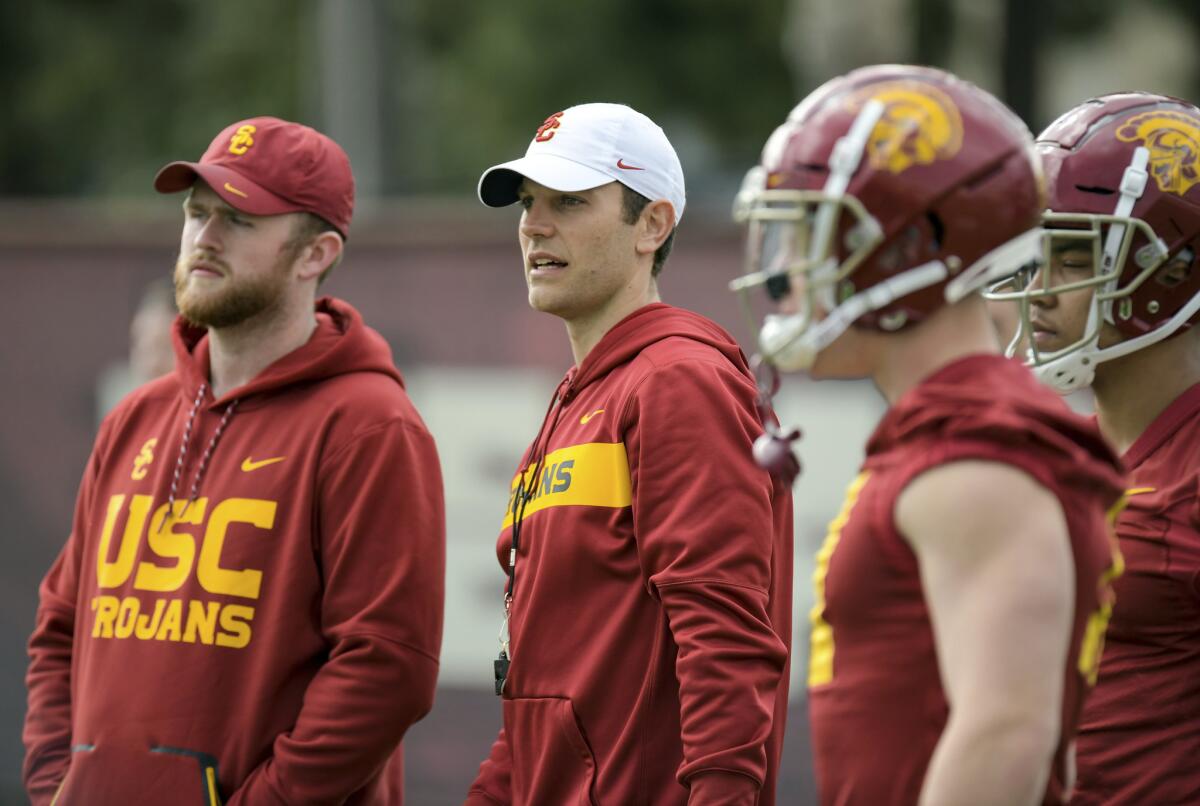
Riley wasnât even drinking age, and there wasnât much else to do in Lubbock other than go to class and hang around Leach, the quirky football professor. That Leach had trusted him with the early development of the most talented quarterback recruit heâd ever brought to Texas Tech was a testament to how quickly Riley was learning the concepts.
âGraham was exciting because he was a talented player, a coachâs kid, and had a good mind for the game,â Riley says. âSo it was fun. I enjoyed everything about coaching the quarterbacks and all thatâs on their plate and trying to get them to the right place mentally, the fundamentals, all of it. I loved doing it, and I knew then that at some point I wanted a chance to coach them all myself.â
By the time Harrell was a junior and on his way to 15,793 career passing yards â then second in NCAA history (it is now fourth) â Leach had promoted Riley to wide receivers coach. He was just 24, and Harrell sensed that more seasoned coaches on the staff couldnât help but continue to see Riley as the former walk-on quarterback and not the future of their profession.
But Harrell never stopped leaning on Rileyâs knowledge. Leach wasnât always around, but he didnât need to be.
âThe way Leach sees the game, you either love it or you hate it,â Harrell says, âand as a player, if you think the same way he does, youâre not going to butt heads a lot. One thing I noticed early on about Lincoln, a lot of the things he told me and would give me advice on were the same things Leach would tell me. He saw the game the same way Leach saw it.â
After Leachâs time in Lubbock came to an abrupt and controversial end, the staff scattered. In 2010, Riley followed Ruffin McNeill to East Carolina, where McNeill became head coach and entrusted Riley with calling Leachâs âAir Raidâ himself for the first time. His offenses lit up Conference USA.
In 2015, when Stoops was looking for a jump for his offense, he naturally landed on Riley. After all, Leach had been Stoopsâ offensive coordinator during his first season in Norman, and Riley was his pupil.
Sign up for our free sports newsletter >>
Riley took Mayfield, a transfer from none other than Texas Tech, and brought him within a thousand yards of Harrellâs career mark, on the way to national stardom.
When Stoops shockingly decided to retire in 2016, Riley began to hear rumblings he could be the next head coach.
âThose are just things in life you donât really ever believe until they actually happen,â Riley says.
It happened.
âIt was real crazy for me,â Harrell says. âBecause just the other day he was a student coach with me, and I might have been buying him lunch because I was at least getting my scholarship check, and he was just paying to be there. And now heâs the head coach at Oklahoma.
âFor the older Tech guys that heâs surpassed, it looks from the outside that he caught a bunch of breaks. But I donât care what business youâre in. To get to the top, youâve gotta catch some breaks, so obviously Lincolnâs caught some breaks, but also, he earned them. He worked his tail off for the opportunity.â
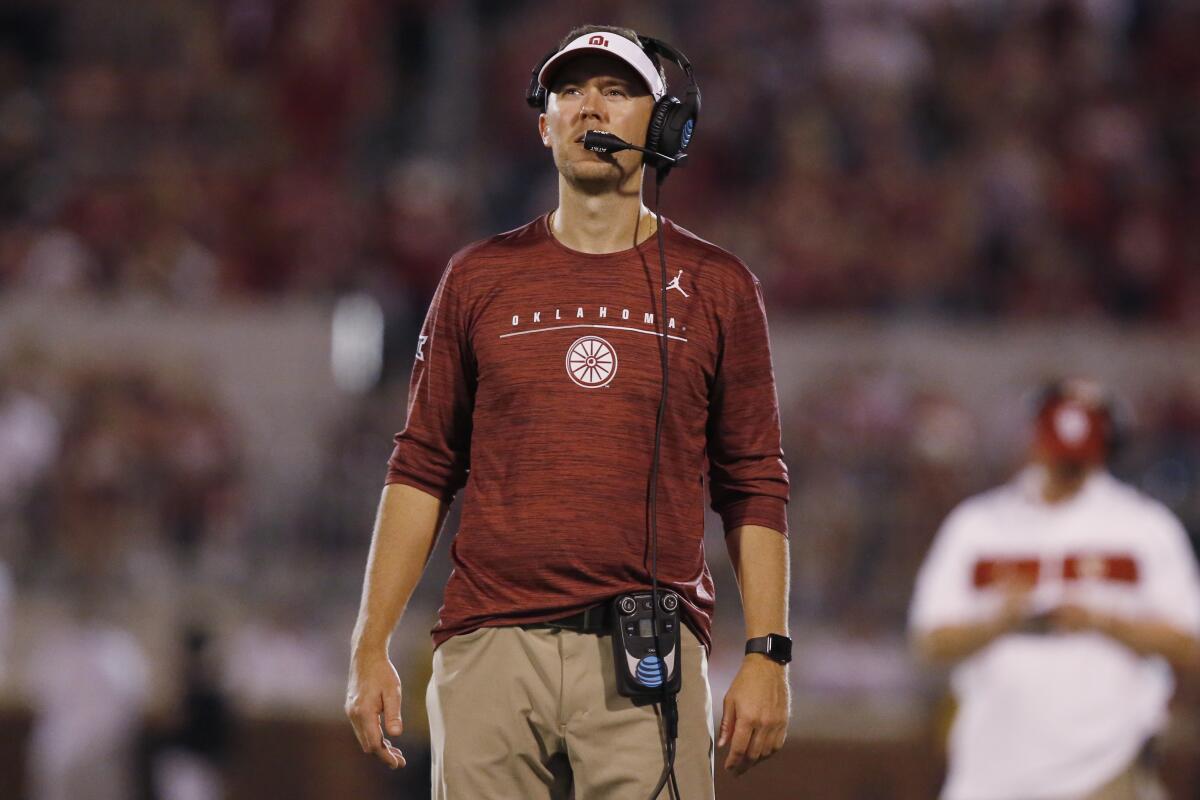
Riley jumped at the chance to coach Hurts, who impressed him with the grace he showed after losing the job at Alabama and having to serve as Tagovailoaâs backup for the 2018 season. His loyalty to his teammates paid off, as he came off the bench to save their season in the Southeastern Conference championship game against Georgia.
In his Oklahoma debut, a 49-31 win over Houston, Hurts passed for 332 yards and three touchdowns and rushed for 176 yards and three more scores.
It was a signal that Rileyâs offense once again may have figured out the Heisman formula â and another example of Riley knowing how to get the most from the premier position on the field.
As for Rileyâs first study at quarterback, he and Harrell keep in touch often via text message. Before Harrellâs first game calling plays at USC against Fresno State on Aug. 31, Riley texted him. The message? âLight it up.â
Harrell says he texts Riley here and there with suggestions when he watches Oklahoma. But mostly, Harrell thinks about his friend when heâs sitting at the dinner table.
âHe bought us steak knives with Harrell engraved in them,â Harrell says. âEvery time we get steaks and have friends over, they ask, âWhere did you get these knives?â Always my wife will say, âThe Rileys bought them for us as a wedding gift.â So Iâm reminded pretty often.
âHe tells me to come and visit him. Iâm sure heâs got a pretty nice home now, making what heâs making. Itâs just hard to see each other with our schedules, and now his vacations are probably on a bigger budget than I can afford. When heâs gonna pay for me to go on vacation with him, Iâll come.â
More to Read
Go beyond the scoreboard
Get the latest on L.A.'s teams in the daily Sports Report newsletter.
You may occasionally receive promotional content from the Los Angeles Times.

